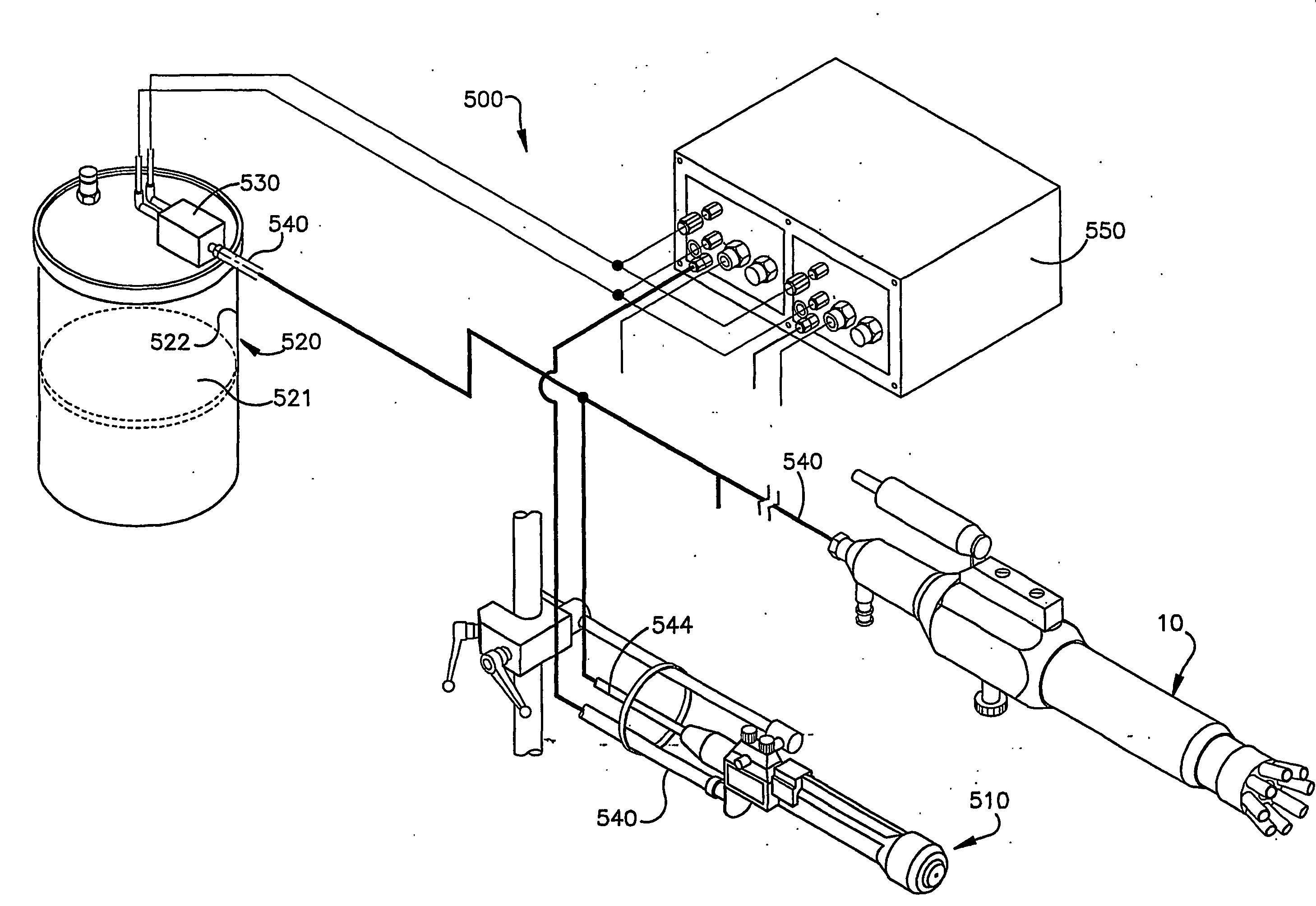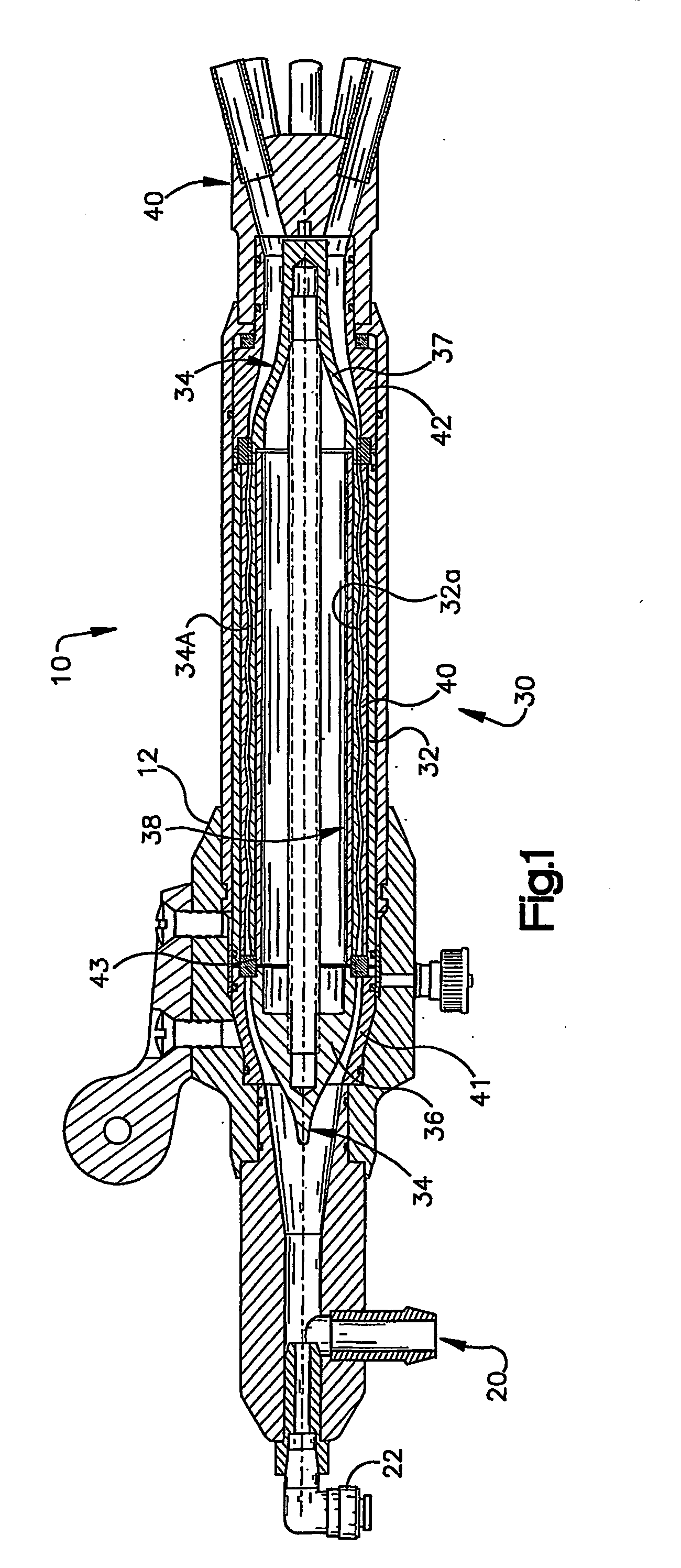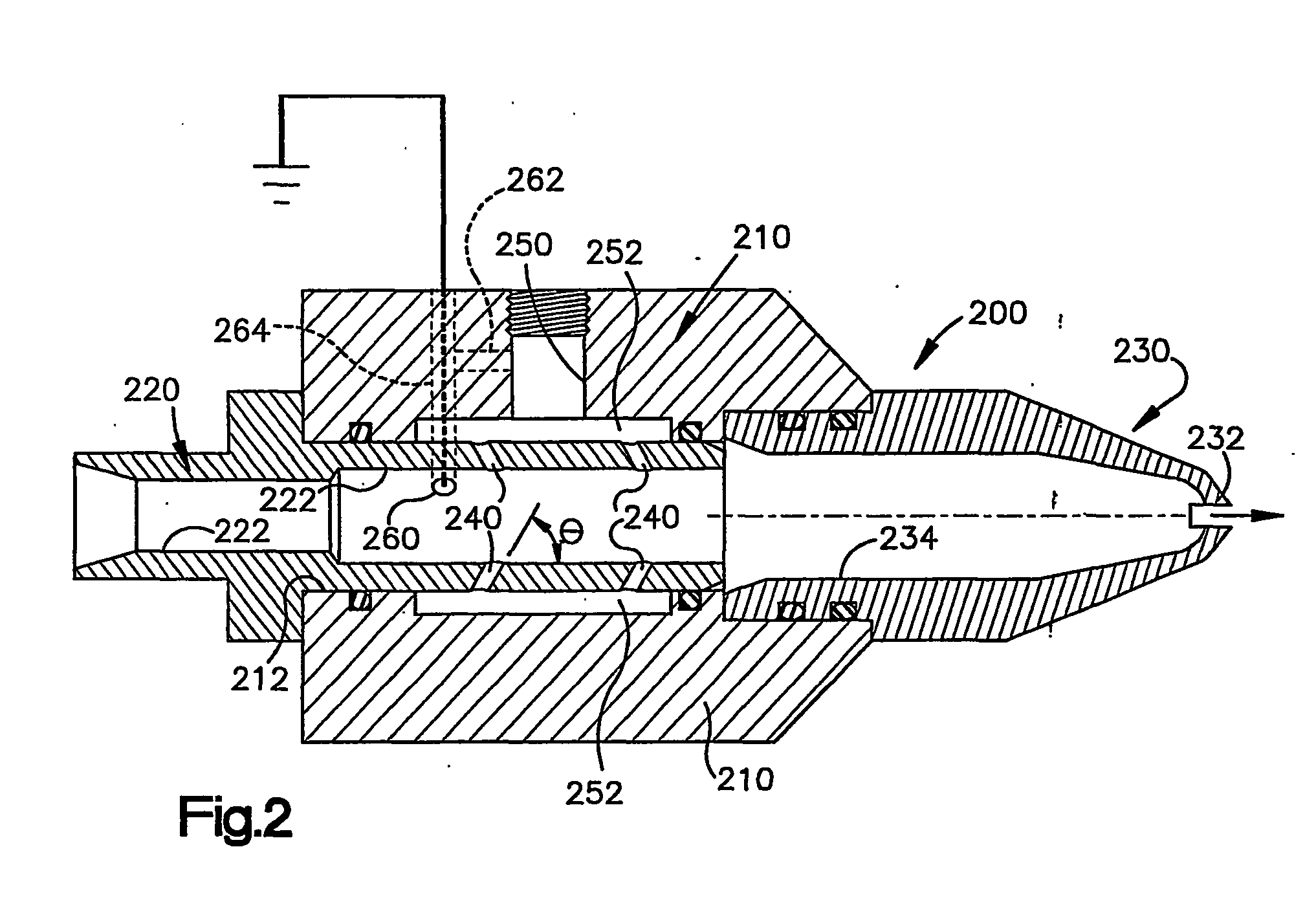Unipolarity powder coating systems including improved tribocharging and corona guns
a powder coating system and tribocharging technology, applied in the field of new products, can solve the problems of not coating the interior corners of parts well, back ionization, pinholing or an orange peel surface of the coated part, etc., and achieve the effect of increasing and enhancing the applied charge and transfer efficiency
- Summary
- Abstract
- Description
- Claims
- Application Information
AI Technical Summary
Benefits of technology
Problems solved by technology
Method used
Image
Examples
example 1
[0054] Individual discs of a 20% polytetrafluoethylene and 80% nylon 6 / 6, polyamide / halogenated hydrocarbon resin blend were prepared. For comparison, coupons of conventional material, that is, nylon and Teflon were also prepared.
[0055] The relative transfer efficiency was determined by spraying powder paint from a flat spray nozzle with a 0.450 inch by 0.065 inch slot at an air flow rate of 4 cubic feet per minute onto a disc at a 45.degree. angle. The powder impacted the surface of the disc of the tribocharging material and was deflected from the disc onto a grounded metal target The powder exiting the nozzle had a measured initial charge of zero. Thus, all of the powder charging was due to impacting the tribomaterial. The amount of powder adhered to the target as compared to the total powder sprayed is defined as the relative transfer efficiency. Typically, 50 grams of polyester epoxy powder from Ferro Corporation was the powder used for the tests. Since this relative transfer ef...
example 2
[0057] Individual discs of a 5% PTFE and 95% nylon 616, polyamide blend were prepared and the transfer efficiency was evaluated as in Example 1. The results are shown below in Table I.
[0058] The advantage of using the polyamide blends in powder spray guns is that they increase the powder charging due to increased discharging of the tribocharged gun surfaces. The increased surface discharging is due to the incompatible polymers which provide for a leakage path that is not present in the homogeneous polymer. Another advantage of using these polyamide blends is that reduced moisture absorption of nylons occur when they are filled with PTFE or polyethylene.
[0059] 2. The Fiber Reinforced Polyamide Resin
[0060] The fiber reinforced polyamide resin comprise a polyamide polymer filled with polyaramide fibers. Preferably there is from about 50% to about 99%, more preferably from about 85% to about 95% of the polyamide polymer. Preferably there is from about 1% to about 50%, and more preferabl...
example 3
[0064] Individual discs of the fiber reinforced polyamide resin were prepared. For comparison, coupons of conventional, non fiber containing nylon and Teflon were also prepared. The relative transfer efficiency was determined as in Example 1. The results are shown below in Table I.
1TABLE I DISK RELATIVE THICKNESS TRANSFER EXAMPLE MATERIAL (IN) POLARITY EFFICIENCY % Comparative Nylon 6,6 0.155 - 16.5 1 5% PTFE in Nylon 6,6 0.250 - 21.3 2 20% PTFE in Nylon 6,6 0.250 - 24.7 3 10% KEVLAR .RTM. in 0.123 - 39.2 Nylon 6,6 Comparative 100% KEVLAR .RTM. tow -- + 54.3 fibers 4 Nylon R MoS.sub.2 filled 0.118 - 22.4
[0065] Surprisingly, despite the fact that the KEVLAR.RTM. tow fiber charges powder positively in the comparative example, the addition of such fiber to the nylon which charges negatively, increased the relative transfer efficiency.
[0066] 3. The Aminoplastic Resins
[0067] The aminoplastic resins are comprised of polymerized units of an amine monomer and an aldehyde monomer. Preferred ...
PUM
 Login to View More
Login to View More Abstract
Description
Claims
Application Information
 Login to View More
Login to View More - R&D Engineer
- R&D Manager
- IP Professional
- Industry Leading Data Capabilities
- Powerful AI technology
- Patent DNA Extraction
Browse by: Latest US Patents, China's latest patents, Technical Efficacy Thesaurus, Application Domain, Technology Topic, Popular Technical Reports.
© 2024 PatSnap. All rights reserved.Legal|Privacy policy|Modern Slavery Act Transparency Statement|Sitemap|About US| Contact US: help@patsnap.com










